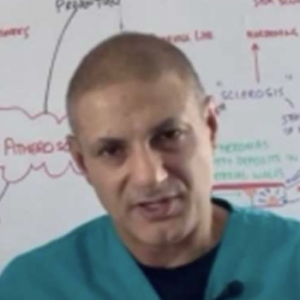Are you in your teenage years? If so, you should get your parents to read this article. Are you the parent of a teenager? Yes? Great, now that we have the right audience, let’s have an open conversation. Do you find it challenging to wake your teenage children in the morning? You’re not alone in this daily struggle. But before you attempt to rouse them from their slumber, take a moment to read this article and understand why it’s not entirely their fault. And if you’re a teenager still reading this and enjoy your early morning lie-ins, keep reading to gather some science-based arguments to justify your late wake-ups.
Why is adolescence a difficult time?
We all know adolescence is a difficult time; it’s kind of a twilight zone. For many years, adolescents are neither children nor adults, but they are stuck in some weird sort of limbo. Their brains are still developing and maturing, and they need more NREM deep sleep to achieve this. It’s a phase where childhood is ending, and the route to adulthood is paved through a rocky road via adolescence. It’s a time when their maturing brains become more independent and less reliant on their parents. This maturation of the brain needs the deep sleep in NREM.
What are NREM and REM?
Before we go any further, let’s clarify what these terms mean. In science, there’s always an acronym for something. When you start doing science, you dive straight into an alphabet soup of acronyms. When you speak to scientists, every second word is an acronym. Then you realise it’s a language that you need to learn quickly. So, here we go.
Both these terms, NREM and REM, are related to stages of sleep. REM means Rapid Eye Movement, and it’s the stage of sleep in which we dream. During this stage of sleep, our voluntary muscles are paralysed to prevent us from acting out our dreams, except for the muscles which help us breathe and, of course, as the name suggests, our eye muscles. It wouldn’t make sense if we label a stage of sleep rapid eye movement and our eye muscles paralysed. So, now we know what REM stands for, what does NREM mean? Take a guess. It’s actually one of the few instances when acronyms make sense. It literally means Non-Rapid Eye Movement and includes the different stages of sleep that are not REM. When scientists realised that sleep was composed of different stages, the next question they wanted answered was what is so special about these stages of sleep and what occurs in each stage. This is what we’ll now explore.
What happens during REM and NREM sleep?
Before we go into the nitty-gritty of the stages of sleep, we need to look into what happens during the development of the brain. The brain is composed of brain cells called neurons, and these individual neurons need to talk to each other; they do this via junctions called synapses. The formation of these synapses, or communication networks, is called synaptogenesis. This allows different parts of the brain to talk to each other. How does this all relate to sleep? Well, synaptogenesis occurs during REM sleep, making babies and young children extremely greedy for this type of sleep at the expense of NREM. In fact, in the last week before birth, the developing fetus will spend a lifetime high of twelve hours in REM sleep.
Why NREM is important for adolescents?
During childhood, the onus was on REM sleep and its ability to foster neural connections. In fact, far more connections are made during REM sleep in childhood than are actually needed. This childhood exuberant burst of synaptogenesis ensures that every eventuality is covered to give the child every opportunity to make the most of their developing brain. Unfortunately, it’s a case of use it or lose it.
As the child approaches adolescence, the brain conducts an audit to see which networks have been used and which haven’t. Then, during adolescence, REM sleep is reduced while NREM is increased, during which the connections that have not been used are pruned while those that remain are reinforced. This pruning of redundant connections and strengthening of those that remain occurs in NREM deep sleep. This is when we can observe a shift from the predominance of REM sleep in childhood to more adolescent NREM deep sleep.
Since this pruning and strengthening occurs in adolescence, childhood REM sleep is dialled down while NREM deep sleep is ramped up. This pruning and strengthening of synapses makes the brain more efficient, much like when a management consultant goes to a company to help with efficiencies by removing poor-performing areas of the business.
The changing circadian rhythms during adolescence
In addition to the requirement for more NREM deep sleep, adolescents must also deal with a change in their circadian rhythm. The circadian rhythm is the body’s internal clock that regulates the sleep-wake cycle and various physiological processes over a roughly 24-hour period. It influences patterns of alertness, hormone production, body temperature, and other biological functions. This internal clock is primarily influenced by environmental cues such as light and darkness, which help synchronise it with the natural day-night cycle. Disruptions to the circadian rhythm, such as those caused by shift work or jet lag, can lead to sleep disturbances, fatigue, and other health issues. Other changes to the circadian rhythm occur in different stages of life.
Childhood circadian rhythms
Because children require more sleep than older individuals, their circadian rhythm is designed to accommodate this need by operating on an earlier schedule. As a result, children tend to feel sleepy early in the evening and wake up earlier than their parents. If you’re a parent, I am sure you’re frustrated by this early rise, especially on the weekends when you try to catch up on sleep. A quick note on catch-up sleep on weekends; you shouldn’t be doing this, but this is a topic for another post.
Teenage circadian rhythms
Adolescence is when teenagers experience a shift in their circadian rhythm compared to younger children. This shift occurs as the timing of the circadian rhythm, the body’s internal clock, is progressively moved forward. Remarkably, this change is consistent across all adolescents, regardless of cultural or geographical differences. So, the problems with dealing with strange sleep-wake cycles are common to all frustrated parents across the globe. You’re not alone. In fact, the circadian rhythm of teenagers shifts so far forward that it surpasses even the timing of their adult parents.
At nine years old, the child’s circadian rhythm typically guides them to sleep between 8 and 9 p.m., influenced in part by the increasing levels of melatonin. However, by the time that same individual reaches sixteen, their circadian rhythm undergoes a significant forward shift in its cycling phase. The peak of melatonin release, signalling darkness and sleep, is now many hours away. Consequently, the sixteen-year-old usually is not inclined to sleep at 9 p.m. Their peak wakefulness often persists at that hour. Meanwhile, as their parents begin to feel tired around 10 or 11 p.m. due to their circadian rhythms that prompt melatonin release and signal sleep, their teenager may still be wide awake. It takes a few more hours before the circadian rhythm of a teenage brain starts to diminish alertness, allowing for a restful sleep to envelope that angsty and petulant teenage brain.
Family tensions and circadian rhythms
This dynamic of differing circadian rhythms in a single household is bound to lead to confrontation and frustration among all involved parties. With parents hoping their teenage children will wake at a reasonable hour in the morning. Unfortunately, reasonable is only reasonable for one party, the parents. This is because teenagers, who can only fall asleep several hours after their parents, may still find themselves in the trough of their circadian downswing. Like an animal abruptly awakened from hibernation too early, the adolescent brain requires more sleep and additional time to complete its circadian cycle before functioning efficiently without grogginess. Unfortunately, a teenage brain is not fully alert at the same time as their adult parents. So, don’t blame your teenage kids for insubordination at the breakfast table.
What it feels like for a teenager to be woken up early in the morning
If parents find this perplexing, another perspective to consider is this: Asking a teenage son or daughter to go to bed and fall asleep at 10 p.m. is like asking the parent to go to bed at 7 or 8 p.m. Try as hard as you can, you can’t win the battle against biology. The circadian rhythm of teenagers is fixed, and it is futile to fight against Mother Nature. Your teenager’s circadian rhythm will not magically change overnight simply because you wish it so. Furthermore, expecting the same teenager to wake up at 7 a.m. the following morning and function with intellect, grace, and good mood is comparable to asking the parent to do the same at 4 or 5 a.m.
Society pressures on early morning wakening
Unfortunately, societal norms and parental attitudes often fail to recognise or acknowledge that teenagers require more sleep than adults and are biologically predisposed to seek it at different times than their parents. It’s understandable for parents to feel frustrated, as they may perceive their teenagers’ sleep patterns as a conscious choice demonstrating their laziness rather than a biological imperative. However, these patterns are involuntary, non-negotiable, and deeply rooted in biology.
The dangers of sleep deprivation in teenagers
As parents, it’s crucial to acknowledge and embrace this reality, offering encouragement and praise for our teenagers’ natural sleep needs. Failure to do so may result in developmental brain abnormalities or increase the risk of mental illness in our children. Indeed, the importance of sleep during adolescence cannot be overstated, as any deprivation of this essential rest can potentially lead to mental health issues.
We’ll delve deeper into the research supporting these claims in future articles. For now, let’s strive to understand and accept the biological realities of teenage sleep, which will allow us to better support and interact with our adolescent children.


